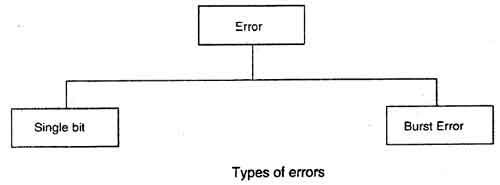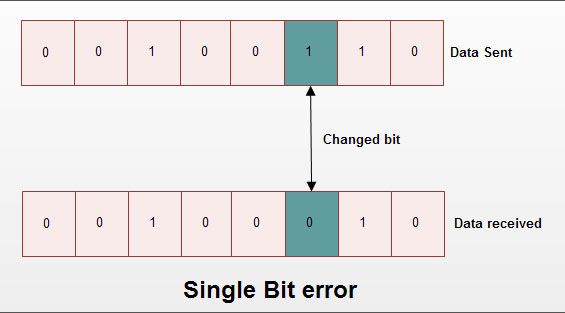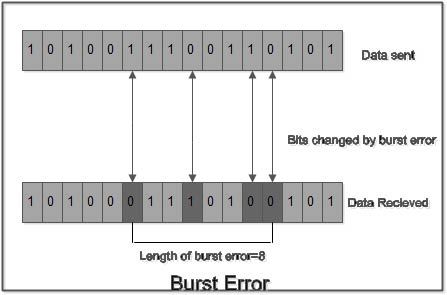When data is being transmitted from one machine to another, it may be possible that data become corrupted on its, way. Some of the bits may be altered, damaged or lost during transmission. Such a condition is known as error.
The error may occur because of noise on line, attenuation and delay distortion. For reliable communication, it is important that errors are detected and corrected.
Type of Errors
There are two main types of errors in transmissions:
1. Single bit error
2. Burst error

Single bit error: It means only one bit of data unit is changed from 1 to 0 or from 0 to 1 as shown in fig.

Single bit error can happen in parallel transmission where all the data bits are transmitted using separate wires. Single bit errors are the least likely type of error in serial transmission.
Burst Error: It means two or more bits in data unit are changed from 1 to 0 from 0 to 1 as shown in fig.

In burst error, it is not necessary that only consecutive bits are changed. The length of burst error is measured from first changed bit to last changed bit. As shown in fig. length of burst error is 8, although some bits are unchanged in between. Burst error is most likely to occur in a serial transmission. The noise occurring for a longer duration affects multiple bits. The number of bits affected depends on the data rate & duration of noise. For e.g. if data rate is 1 kbps, a noise of 1/100 second can affect 10 bits.
 Dinesh Thakur holds an B.C.A, MCDBA, MCSD certifications. Dinesh authors the hugely popular
Dinesh Thakur holds an B.C.A, MCDBA, MCSD certifications. Dinesh authors the hugely popular